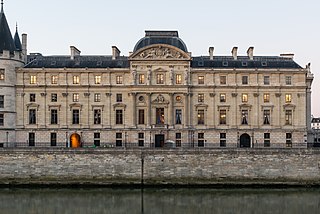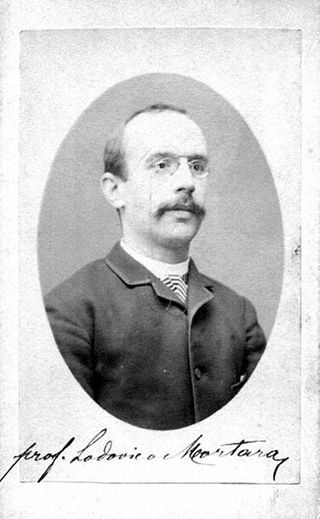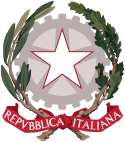
The Court of Cassation is the supreme court for civil and criminal cases in France. It is one of the country's four apex courts, along with the Council of State, the Constitutional Council and the Jurisdictional Disputes Tribunal.

A court of cassation is a high-instance court that exists in some judicial systems. Courts of cassation do not re-examine the facts of a case; they only interpret the relevant law. In this, they are appellate courts of the highest instance. In this way, they differ from systems that have a supreme court that can rule on both the facts of a case and the relevant law. The term derives from the Latin cassare, "to reverse or overturn".
Corrado Carnevale is an Italian judge, and former president of the Italian Supreme Court of Cassation.
Trials and allegations involving Silvio Berlusconi (1936-2023) have been extensive and include abuse of office, bribery and corruption of police officers, judges and politicians, collusion, defamation, embezzlement, extortion, false accounting, mafia, money laundering, perjury, tax fraud, underage prostitution influence and witness tampering.

The Supreme Court of the Netherlands, officially the High Council of the Netherlands, is the final court of appeal in civil, criminal and tax cases in the Netherlands, including Curaçao, Sint Maarten and Aruba. The Court was established on 1 October 1838 and is located in The Hague.

The judicial system of Egypt is an independent branch of the Egyptian government which includes both secular and religious courts.
The Supreme Tribunal of the Apostolic Signatura is the highest judicial authority in the Catholic Church. In addition, it oversees the administration of justice in the church.

The Court of Cassation of Belgium is the supreme court of the Belgian judiciary. The court is composed of thirty judges with life tenure who are nominated by the High Council of Justice of Belgium and appointed by the Belgian federal government. The court handles cases in the two main languages of Belgium, Dutch and French, and provides certain facilities for cases in German. The court is assisted in its work by a public prosecutor's office and a bar association, which both function separately from other structures. The duty of the public prosecutor's office is to provide advisory opinions to the court on how the law ought to be interpreted and applied. The attorneys of the court's bar association assist litigants in proceedings before the court; in certain cases, their assistance is mandatory.

In most legal jurisdictions, a supreme court, also known as a court of last resort, apex court, and highcourt of appeal, is the highest court within the hierarchy of courts. Broadly speaking, the decisions of a supreme court are binding on all other courts in a nation and are not subject to further review by any other court. Supreme courts typically function primarily as appellate courts, hearing appeals from decisions of lower trial courts, or from intermediate-level appellate courts. A Supreme Court can also, in certain circumstances, act as a court of original jurisdiction, however, this is typically limited to constitutional law.

The Corte d'Assise is an Italian court composed of two professional, stipendiary judges or giudici togati; and six lay judges or giudici popolari, who are selected from the people. The Corte d'Assise has jurisdiction to try all crimes carrying a maximum penalty of 24 years in prison or more. These are the most serious crimes, such as terrorism and murder. Slavery, killing a consenting human being, and helping a person to commit suicide are also serious crimes that are tried by this court. Penalties imposed by the court can include life sentences. The Corte d'Assise does not preside over cases involving attempted murder. The prosecution is conducted by the Public Prosecutor. Decisions are made by giudici togati and giudici popolari together at a special meeting held behind closed doors, named Council Chamber, and the Corte d'Assise is required to publish written explanations of its decisions.

The Supreme Court, earlier known as the Supreme Court of Cassation, is the court of last resort in the Republic of Serbia. It is the court of cassation which reviews and possibly overturns previous rulings made by lower courts. It was established in 1846 by a decree of Prince Aleksandar Karađorđević. In the last 160 years since it was established, the Court has asserted its authority within judiciary in Serbia and beyond. The Supreme Court is today authorized by the Constitution of Serbia and the Law on Organization of Courts.

The Italian Code of Criminal Procedure contains the rules governing criminal procedure in every court in Italy. The Italian legal order adopted four codes since the Italian Unification. After the first two codes, in 1865 and 1913, the Fascist Government established in 1930 a new code adopting an inquisitorial system. In 1988 the Italian Republic adopted a new code, that could be considered to be somewhere in between the inquisitorial system and the adversarial system.

The judiciary of Italy is composed of courts responsible for interpreting and applying the law in the Italian Republic. Magistracy is a public office, accessible only to Italian citizens who hold an Italian Juris Doctor and have successfully partaken in one of the relevant competitive public examinations organised by the Ministry of justice. The judicial power is independent and there is no internal hierarchy within. Italian magistrates are either judges or public prosecutors.
The law of Vatican City State consists of many forms, the most important of which is the canon law of the Catholic Church. The organs of state are governed by the Fundamental Law of Vatican City State. The Code of Penal Procedure governs tribunals and the Lateran Treaty governs relations with the Italian Republic.

The Supreme Court of the Republic of Albania is the highest court of Albania and is the final court of appeals in the country's judicial system. It is composed of seventeen judges: the Chief Justice and sixteen Members.

The Supreme Court of the Dominican Republic is the highest court existing in the Republic and is, therefore, the head of the judiciary in the country.

Francesco Carnelutti was an Italian jurist and lawyer.

The High Council of the Judiciary is an Italian institution of constitutional importance, entrusted to preside over the organisation of the Italian Judiciary. The High Council sits in the Palazzo dei Marescialli, Piazza Indipendenza 6, Rome.

Lodovico Mortara was an Italian jurist, magistrate, and politician. He served as Minister of Justice with the first Nitti government.













